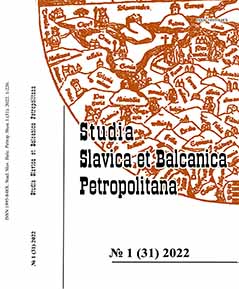Позднепалеологовская икона Рождества Христова из Патриаршего музея церковного искусства при Храме Христа Спасителя в Москве: особенности живописной манеры
The Late Paleologian icon of the Nativity of Christ from the Patriarch’s museum of church art at the Cathedral of Christ the Saviour in Moscow: on the features of the painting style
Author(s): Natalia Nikolaevna BobrovaSubject(s): Christian Theology and Religion, History of Church(es), Visual Arts, 13th to 14th Centuries, History of Art
Published by: Издательство Исторического факультета СПбГУ
Keywords: Byzantine iconography; 14th century; icon; Late Paleologian period; manner of painting; tempera painting; Nativity of Christ; Resurrection of Lazarus;
Summary/Abstract: Byzantine icons of the 14th century in Russian museums are scattered material. In this regard, the situation when it is possible to identify or at least raise the question of whether two icons of such an artistic level from different collections belong to the same master is almost unique. The Late Paleologian icon of the Resurrection of Lazarus from the the Russian Museum can without exaggeration be called the pearl of the collection. The icon was received by the Russian Museum in 1928 from the collection of G. N. Gamon-Gaman through the State Museum Fund. There is a small icon of the Nativity of Christ distinguished by high pictorial skill in the collection of the new Patriarchal Museum of Church Art at the Cathedral of Christ the Savior in Moscow. The study of this late Paleologian monument is just beginning, but the special relevance of its research is due to the fact that the artistic features allow us to compare this image with the aforementioned icon of the Resurrection of Lazarus, a landmark monument of the collection of the Russian Museum. A number of features of the icon of the Nativity painting technique makes it possible to speak about a significant stylistic community of these two monuments despite the fact that the preservation of it is not the best. The similarity of the nuances of color, the principles of shaping, the presence of common characteristic techniques in the construction of gaps, the picturesque solution of clothes, the dashed manner of modeling the light part of the slides, individual handwriting and great similarity in individual details, the general features of the drawing of the hands and feet of the characters, the nature of the vegetation image, the proportions of the figures, the size of the image, the features of gilding halos (on top of the paint layer) ― all these aspects reveal such a close similarity of painting techniques that it becomes possible to raise the question of identifying in this case the individual manner of one master and the belonging of these two icons to the festive row of the same iconostasis. Technical studies of the icon of the Resurrection of Lazarus were carried out by S. I. Golubev during the restoration in the Russian Museum in 1986–1990, the research results of which definitely make it possible for a more substantive comparative analysis of the two icons.
Journal: Петербургские славянские и балканские исследования
- Issue Year: 2022
- Issue No: 1(31)
- Page Range: 186-194
- Page Count: 9
- Language: Russian

